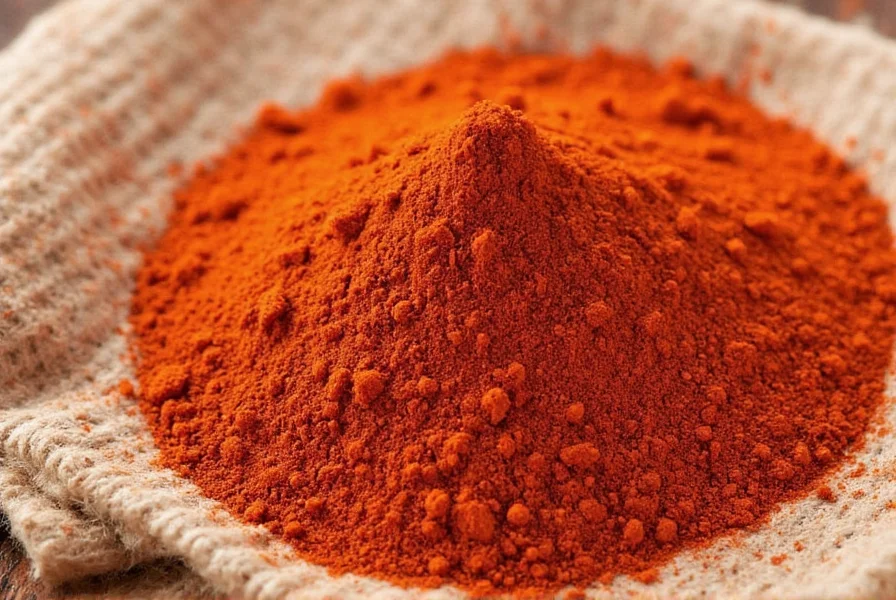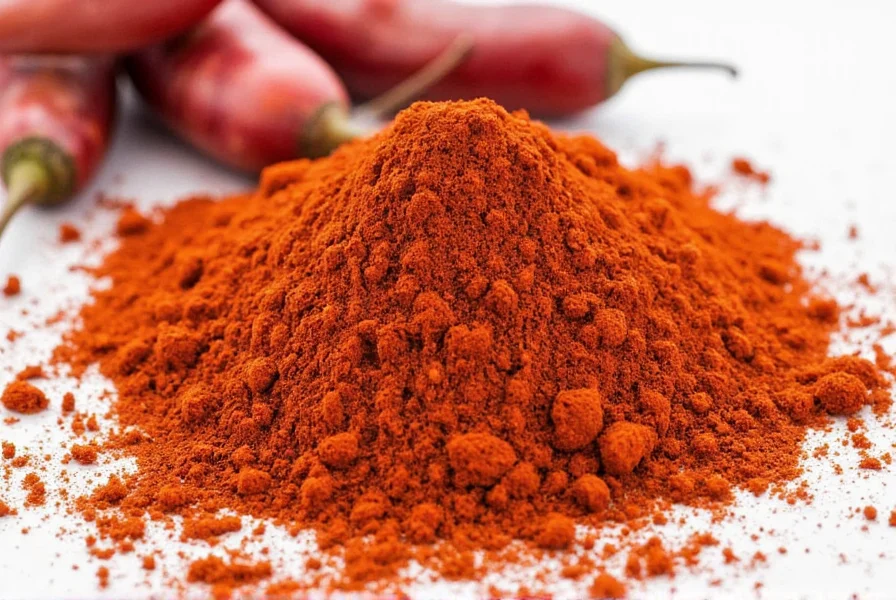Running out of chili powder mid-recipe doesn't have to ruin your cooking plans. Whether you're preparing chili con carne, fajitas, or a hearty stew, knowing effective chili powder substitutes keeps your culinary creations on track. This guide provides tested alternatives that maintain flavor integrity while accommodating different spice preferences and pantry availability.
What Exactly Is Chili Powder?
Before exploring substitutes, it's important to understand what you're replacing. Commercial chili powder isn't a single spice but a blend typically containing ground chilies (like ancho, cayenne, or chipotle), cumin, garlic powder, oregano, and sometimes salt. The specific mix varies by brand, which explains why finding the right substitute requires matching both heat level and flavor profile.
Top 5 Effective Chili Powder Substitutes
Not all substitutes work equally well in every dish. The best alternative depends on your recipe's requirements and available ingredients.
1. Paprika-Based Blend (Best All-Around Substitute)
This versatile replacement mimics the flavor complexity of commercial chili powder. For every 1 tablespoon of chili powder required:
| Ingredient | Amount | Flavor Contribution |
|---|---|---|
| Sweet paprika | 2 teaspoons | Provides base chili flavor without excessive heat |
| Ground cumin | 1 teaspoon | Adds earthy depth characteristic of chili powder |
| Garlic powder | 1 teaspoon | Contributes savory note found in most blends |
For recipes requiring medium heat, add 1/8 teaspoon cayenne pepper. This homemade chili powder substitute works exceptionally well in chili recipes, taco seasoning, and meat rubs.

2. Ancho Chili Powder (Best for Authentic Mexican Dishes)
When preparing traditional Mexican recipes, pure ancho chili powder makes an excellent 1:1 substitute. Anchos provide the signature slightly sweet, raisin-like flavor with mild heat (1,000-2,000 SHU) that forms the base of many commercial chili powders. Use equal amounts to replace standard chili powder in mole sauces, enchilada fillings, or carne adovada.
3. Cayenne-Oregano Blend (Best for Spicier Applications)
For dishes requiring more heat like Cajun recipes or spicy stews:
- 1 part cayenne pepper (for heat)
- 1 part dried oregano (for earthy notes)
- Optional: 1/2 part cumin for additional depth
Start with half the amount you'd use for regular chili powder, then adjust to taste. This chili powder replacement works particularly well in Creole dishes and hot sauces.
Flavor Profile Comparison of Substitutes
Understanding how each alternative affects your dish's final taste ensures better cooking results:
| Substitute | Heat Level | Flavor Notes | Best Used In |
|---|---|---|---|
| Paprika-cumin-garlic blend | Mild to medium | Earthy, slightly sweet, savory | Chili, tacos, meat rubs |
| Ancho chili powder | Mild | Fruity, raisin-like, complex | Mexican sauces, stews |
| Cayenne-oregano blend | Medium to hot | Sharp, herbal, pungent | Cajun dishes, hot sauces |
| Chipotle powder | Medium-hot | Smoky, earthy, slightly sweet | BBQ rubs, smoked dishes |
When to Avoid Certain Substitutes
Not all chili powder alternatives work universally. Be mindful of these common pitfalls:
- Hot sauce: While tempting, the liquid content alters recipe texture and the vinegar flavor dominates
- Red pepper flakes: Provide heat but lack the earthy notes of chili powder and have inconsistent texture
- Curry powder: Contains completely different spices that will dramatically change your dish's flavor profile
- Tomato paste: Adds moisture and acidity that isn't present in dry spice blends
Creating Your Own Custom Chili Powder Blend
For the most reliable chili powder substitute measurements, make a small batch of homemade blend:
- Mix 2 tablespoons sweet paprika
- Add 1 tablespoon ground cumin
- Incorporate 1 tablespoon garlic powder
- Stir in 2 teaspoons dried oregano
- Include 1 teaspoon onion powder
- Add 1/2 teaspoon cayenne pepper (adjust for heat preference)
Store in an airtight container for up to 6 months. This versatile chili powder replacement works across most recipes calling for standard chili powder.

Recipe-Specific Substitution Guide
Tailor your chili powder substitute based on what you're cooking:
- For chili con carne: Use the paprika-cumin-garlic blend with added cayenne for authentic flavor
- For taco seasoning: Increase cumin slightly (1.5 parts) for more earthy notes
- For sensitive palates: Omit cayenne and use smoked paprika for depth without heat
- For slow cooker recipes: Increase oregano slightly as flavors mellow during long cooking
Testing Your Substitute
Before adding your chili powder replacement to the entire dish, test with this method:
- Mix 1/4 cup of your recipe's liquid base (broth, tomato sauce, etc.)
- Add your substitute at the intended ratio
- Simmer for 5 minutes to allow flavors to meld
- Taste and adjust before incorporating into the main dish
This prevents over-spicing and ensures your chili powder substitute measurements deliver the desired flavor profile.
Frequently Asked Questions
Can I use cumin alone as a chili powder substitute?
While cumin provides the earthy base note found in chili powder, using it alone creates an unbalanced flavor. For better results, combine cumin with paprika and garlic powder in a 1:2:1 ratio to approximate commercial chili powder's complexity.
How much paprika equals one tablespoon of chili powder?
Paprika alone doesn't provide sufficient flavor complexity. For proper chili powder replacement measurements, use 2 teaspoons paprika plus 1 teaspoon cumin and 1 teaspoon garlic powder to replace 1 tablespoon of chili powder. This combination better replicates the multi-dimensional flavor of commercial blends.
What's the best mild chili powder substitute for children's food?
For sensitive palates, combine 2 parts sweet paprika with 1 part cumin and omit cayenne entirely. Smoked paprika works particularly well as a mild chili powder substitute alternative, providing depth without heat while maintaining the characteristic chili flavor profile.
Can I substitute chili powder with taco seasoning?
Yes, but with caution. Taco seasoning contains chili powder plus additional ingredients like salt and sometimes sugar. Use 3/4 tablespoon taco seasoning to replace 1 tablespoon chili powder, and reduce added salt elsewhere in your recipe to compensate for the extra sodium in most commercial taco seasonings.
How do I adjust recipes when using chipotle powder as a chili powder replacement?
Chipotle powder is significantly hotter than standard chili powder. When using it as a chili powder substitute in recipes, start with half the amount called for, then taste and adjust. For every 1 tablespoon chili powder required, begin with 1.5 teaspoons chipotle powder, as its smoky heat intensifies during cooking.











 浙公网安备
33010002000092号
浙公网安备
33010002000092号 浙B2-20120091-4
浙B2-20120091-4